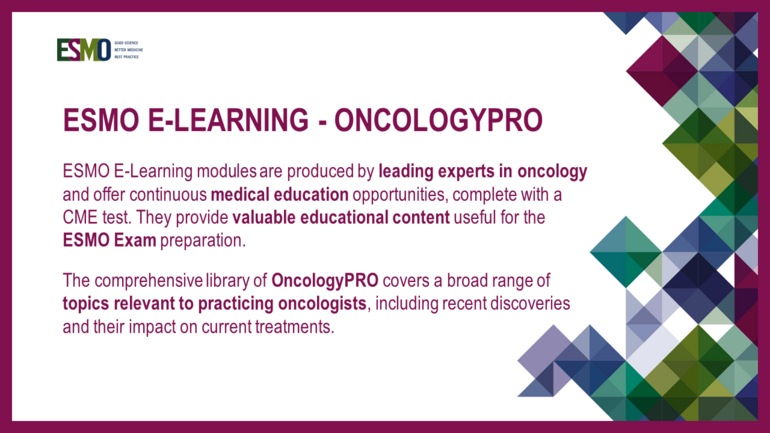This E-learning module covers different aspects of glioblastoma, the most common primary brain tumour in adults. The topics covered include epidemiology, risk factors, clinical presentation, imaging, pathology features and classification, gene mutations, prognostic factors, treatment strategies in patients with newly diagnosed and recurrent glioblastoma, supportive care, and an overview of selected ongoing clinical trials.
The median age at diagnosis of primary glioblastoma is 64 years and for secondary glioblastoma 45 years. The author lists risk factors, namely cranial irradiation, hereditary tumour syndromes which are responsible for less than 5% of glioblastomas, in particular the Li Fraumeni syndrome, Turcot syndrome, and neurofibromatosis 1 and 2. There is no clear evidence for occupational factors or cell phone use as risk factor.
More than >90% of cases develop de novo with a short clinical history of days to a few months and it is referred to primary glioblastoma, while less than 10% of cases develop from lower grade gliomas, referred to secondary glioblastomas, typically with a clinical history of years.
Clinical presentation is highly variable and depends on tumour localisation and size: focal neurological signs, mood and personality changes, seizures, and symptoms of increased intracranial pressure, namely nausea, vomiting, and headache.
The author states that the standard first line therapy in patients with newly diagnosed glioblastoma is the maximal safe resection and combined chemoradiation with temozolomide. In elderly patients reduced chemoradiation or stratification by MGMT promoter methylation status into radiotherapy in case of MGMT unmethylated or unknown status versus temozolomide in MGMT methylated cases could be considered. Besides elaborating the treatment regimens for patients with newly diagnosed disease, the author also elaborates the treatment options for patients with recurrent glioblastoma. A detailed therapeutic algorithm for glioblastoma is provided.
Furthermore, the author presents supportive therapy with anti-oedema and anticonvulsive therapy which are of importance in most patients with glioblastoma.
In this module, the author also provides an overview of ongoing trials for newly diagnosed and recurrent glioblastoma, that test novel proteasome inhibitor, CDK inhibitor, and targeted treatment based on molecular profiling (e.g. tumour mutational burden, BRAF mutations, NTRK fusions, FGFR fusions, and MET amplifications/fusions).
Matthias Preusser has reported:
Honoraria for speaker, consultancy or advisory role from Bayer, Bristol-Myers Squibb, Novartis, Gerson Lehman Group, CMC Contrast, GlaxoSmithKline, Mundipharma, Roche, Astra Zeneca, AbbVie, Lilly, Medahead, Daiichi Sankyo, Merck Sharp & Dome, BMJ Journals, MedMedia, Sanofi, Tocagen.
Financial support to his Institution from Böhringer-Ingelheim, Bristol-Myers Squibb, Roche, Daiichi Sankyo, Merck Sharp & Dome, Novocure, GlaxoSmithKline, AbbVie.


